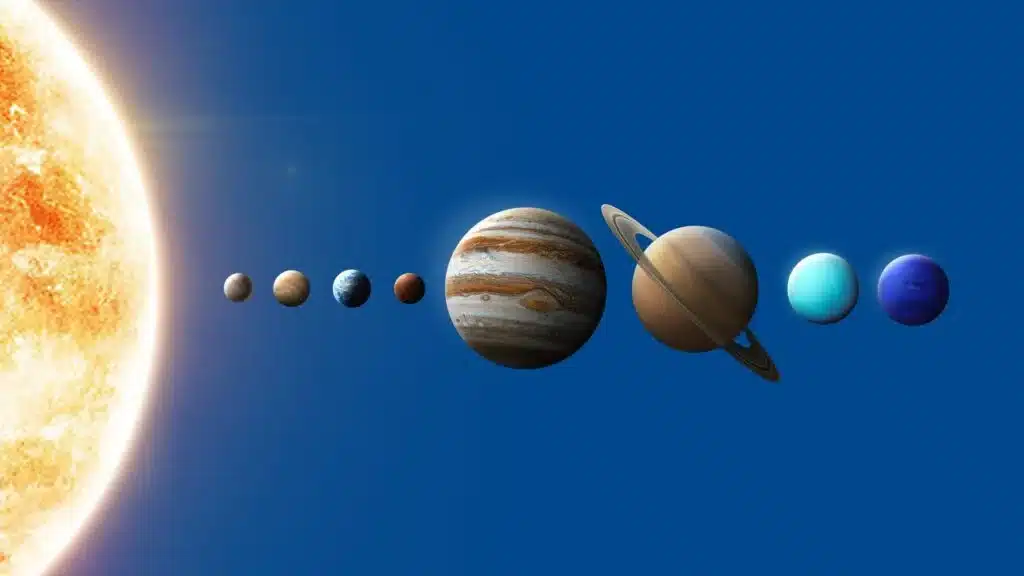Rare Planetary Alignment in February 2025

A spectacular celestial event is on the horizon for February 2025. Five of the brightest planets in our solar system—Venus, Jupiter, Mars, Mercury, and Saturn—will align in the evening sky. This rare alignment will peak on February 24, when Mercury and Saturn will appear closest to each other. Skywatchers will have a unique opportunity to witness this stunning display, especially if they have a clear view of the western sky at dusk. For those equipped with telescopes or binoculars, Uranus and Neptune will also be visible, adding to the excitement. Similar alignments have occurred in the past, but this particular event offers an accessible viewing window for both astronomy enthusiasts and casual observers. The next comparable event will not happen until October 2028, making this a once-in-a-lifetime chance to see multiple planets in one glance.
Venus and Saturn: A Contrasting Pair
Venus will take center stage as the brightest planet in the evening sky. It will shine prominently in the west-southwest, captivating observers with its intense luminosity. In contrast, Saturn will appear below Venus. Although Saturn is a magnificent planet, it will be significantly dimmer during this alignment. This dimness is due to the current orientation of its rings, which reflect less sunlight. For those using telescopes, Saturn’s rings will be visible as a thin line bisecting its disk. As February progresses, Saturn will gradually sink lower toward the horizon. By the end of the month, spotting Saturn will become increasingly challenging. Therefore, skywatchers should take advantage of the earlier days in February to catch a glimpse of this beautiful contrast between the two planets.
Jupiter and Mars Brighten the Night
Jupiter will also be a standout feature in the night sky. It will appear high in the southern sky, radiating a silvery-white glow that is hard to miss. Observers with binoculars will be able to see Jupiter’s four largest moons—Europa, Ganymede, Callisto, and Io. Particularly on February 25-26, three of these moons will form a distinct triangular formation, creating a dynamic spectacle. Meanwhile, Mars will be positioned in the eastern sky, sharing its space with the twin stars of Gemini, Pollux and Castor. This trio will shift gradually across the sky, offering a captivating view throughout the month. The combination of Jupiter’s brilliance and Mars’ unique positioning will make for an unforgettable evening of stargazing.
Mercury and Saturn’s Close Encounter
As February draws to a close, Mercury will emerge in the evening sky, reaching its peak brightness on February 24. On this day, Mercury will align closely with Saturn, separated by only 1.5 degrees. Mercury will shine nearly eight times brighter than Saturn, making it easier to spot. Observers will need a clear view of the west-southwest horizon and may want to use binoculars to see both planets clearly. As the evening progresses, Saturn will fade into the twilight, making this close encounter even more special. This alignment will offer a rare opportunity for skywatchers to witness the beauty of these two planets together, creating a striking visual near the horizon.
Uranus and Neptune: The Fainter Participants
For those equipped with telescopes or high-powered binoculars, Uranus and Neptune will also be within reach during this celestial event. Uranus will present a faint greenish hue, which may be visible under dark-sky conditions. However, Neptune will require optical aid due to its lower brightness. Throughout February, Neptune will be located in the constellation Pisces. As the month progresses, it will gradually vanish into the brightening evening sky, especially as it approaches its solar conjunction in March. Skywatchers hoping to view this rare planetary alignment should mark their calendars for February 24, when the best chance to witness all five bright planets together will occur. This event promises to be a highlight for astronomy lovers and casual observers alike.
Observer Voice is the one stop site for National, International news, Sports, Editor’s Choice, Art/culture contents, Quotes and much more. We also cover historical contents. Historical contents includes World History, Indian History, and what happened today. The website also covers Entertainment across the India and World.
Follow Us on Twitter, Instagram, Facebook, & LinkedIn

